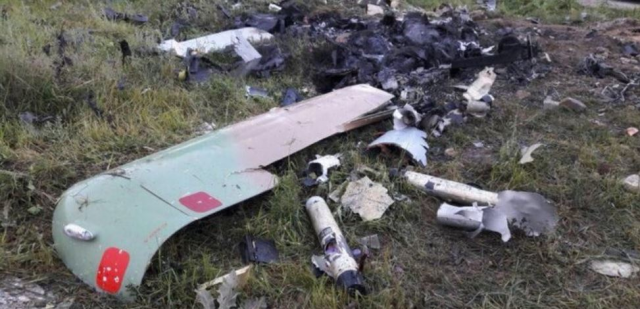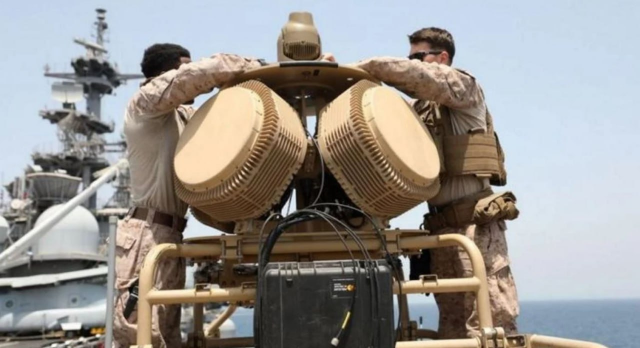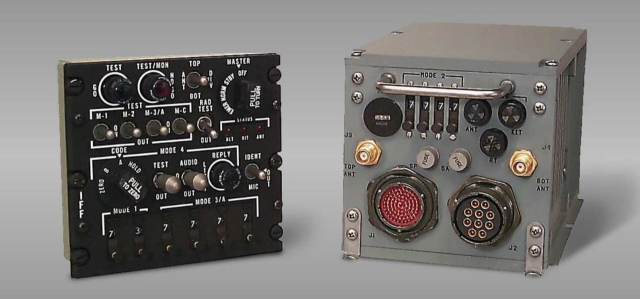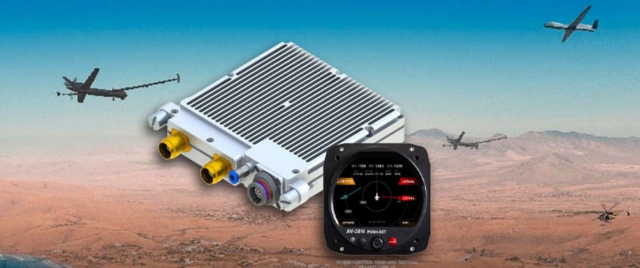In the practice of using UAVs and fighting them, the world–old problem has surfaced - how to distinguish a "friend" from an "enemy"? While there were few drones, this was not too relevant. But as the battle formations become saturated with them, the problem becomes more acute.
About forty percent of the drones shot down during the Arab-Israeli conflict were shot down by friendly fire. And this is quite natural. When IDF soldiers, while in the Gaza Strip, that is, in frontline conditions, detect a UAV, they will try to shoot it down. There is simply no time to find out its affiliation – because only a few seconds may pass between the detection of a small-sized drone and its attack on those who "discovered" it.
 |
| In military conflicts, a significant number of UAVs were lost to friendly fire. |
| Source: Military Informant |
The same can be said about the military conflict in Ukraine. Moreover, fighters on both sides of the front line will "shoot down everything flying".
While the number of UAVs used in each specific area of combat operations was small, the troops managed with a "warning voice". But this is no longer the case. And if the Americans start using drones to supply their troops, the problem will not only become "more massive", but also "more expensive".
Currently, the main means of detecting UAVs is a radio scanner. It is able to receive and identify the signal coming through the radio channel between the operator and the drone. However, this gives only a "simple fact": there may be a UAV in the range of the scanner. The key words are "maybe". After all, there may not be a drone in the vicinity of the scanner. It just sent a signal similar to the incoming/outgoing signal of a UAV – and nothing more. Translating into technical language, the scanner gives a large number of false positives. Including from the radio communication channels of "their" drones.
The scanner is not able to identify UAVs according to the "friend or foe" criterion. It is rumored that scanners used by AFU fighters can identify certain types of enemy drones. In particular, this is said about the Russian small-sized unmanned reconnaissance aircraft Orlan-10.
However, even if this is true, then this possibility is "treated" by diverting the radio signal of the "UAV operator" to another frequency. In the presence of digital transceivers, it is possible to organize communication on a "jumping" frequency, or even make the signal pseudo-noisy.
Not only "personal" scanners suffer from the lack of identification of UAVs. "Anti-unmanned" air defense systems developed by order of the US Marine Corps (MADIS and L-MADIS), despite the complexity and set of different detection channels (low-level TV + dual-band IR sensor + the same radio scanner) they are also deprived of this ability.
 |
| Despite its "sophistication", the L-MADIS detection system is not able to solve the problem of recognizing UAVs according to the "friend-foe" criterion. |
| Source: Military Informant |
The question immediately arises: why not equip UAVs and their detection systems with state identification system (CDF) equipment? The request is not a problem. For example, the miniature interrogator developed by NPP Pulsar weighs only 150 grams and has scanty energy consumption. But here are the defendants...
Domestic aircraft responders CGO "Password" 6201/6202 have a block weight of 50/64 kg and an energy consumption of 435/665 Watts, respectively. If you remember that the rather large domestic UAV "Outpost" has a payload of 63 kg, it becomes clear that you cannot set a "Password" even on it. What can we say about the unmanned "trifle".
The American CDF defendant AN/APX-101(V) is noticeably lighter - 14 kg (without harnesses and antennas). However, it is unacceptable for most UAVs by weight.
 |
| The defendant of the AN/APX-101(V) state identification system is small only in comparison with its Russian counterparts. |
| Source: Military Informant |
Even if the problem of the masses/dimensions/energy consumption of the CDF defendants can be solved in the near future, the problem of information protection remains. The losses of drones – compared to the "big" aircraft – are very high. Therefore, the enemy can quickly gain access to the defendant's encryption block and has the ability to crack the defendant's signal generation algorithm. It is clear that for this reason, no one will go to install "real" CDF equipment on the UAV.
| png"> |
| The small-sized uAvionix CDF responder is suitable for placement only on relatively large drones. |
| Source: Military Informant |
You can try to develop an "unmanned" recognition system "friend-foe". It can be simplified and, as a result, have a noticeably lower weight compared to the "usual" CDF. Alternatively, the "I am mine" signal can be sewn into the structure of the "UAV operator" channel.
However, this does not negate the problem of hacking the system in case of loss of the UAV. In addition, the need to send a request poses a threat to the "owner" of the requester – UAVs can learn to be guided by an "enemy" request. Let's not forget about the economy – we will have to produce "unmanned" CDF equipment in huge quantities. Finally, there is a serious organizational task of promptly replacing identification codes – both in drones and in scanners.
So for UAVs today, only "passive" recognition of belonging to "friend or foe" seems acceptable. Now they are actively engaged in this, focusing on the use of artificial intelligence (AI).
Currently, most UAVs are identified by comparing their radio signals with a library of signatures stored in scanner memory. However, such libraries do not have time to track the changes that their developers make to the UAV communication channels. Therefore, the Pentagon is puzzled by the possibility of creating field systems that will allow operators to update libraries in real time. Similar work is underway in the field of recognition of UAV images obtained using electron-optical and radar systems.
There are some successes in this. More precisely, "perhaps there are." According to unverified data, the UAV detectors-scanners used by the Armed Forces of Ukraine are capable of identifying new ("for themselves") types of drones through the use of AI. However, this is possible only as long as the developers of communication systems for UAVs have not bothered to counteract recognition. And there is no doubt that the next type of confrontation in the field of UAV use has already begun, and will develop rapidly.
Alexey Zakharov,
aviation expert


